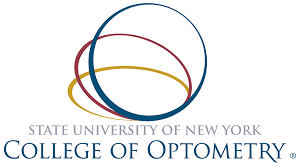ABOUT US
Glaucoma, diabetic retinopathy, and other serious eye diseases associated with aging are a major risk factor for the vision loss and blindness. By exploiting our understanding of the mechanisms of cell death during these diseases, we can contribute to the need to reduce healthcare costs and reduce the burden that blindness can place on our society.
Preserving Vision…Preventing Blindness
Connexin Therapeutics Ltd. is a UK based biotech company with R&D and Management in the UK and a US office in New York. We are driven by a simple, but powerful goal: to protect vision in patients with progressive glaucoma and other serious eye diseases which cause blindness.
Current estimates suggest a global glaucoma prevalence of over 60 million cases. And, with an aging population, this prevalence is growing rapidly. Most cases are associated with elevated intraocular pressure. However, despite the availability of drugs which reduce intraocular pressure, visual impairment and vision loss remain a problem. While most cases are associated with elevated intraocular pressure, approximately 25% of cases have normal intraocular pressure. Patients are frequently treated with drugs to reduce intraocular pressure, simply because physicians lack therapeutic options.
At Connexin Therapeutics, we are developing the options ophthalmologists need to preserve vision in their patients with glaucoma and related conditions.
Collaborative
We have partnerships with leading academic and industry research centers
Efficient
We operate a virtual business model to minimize operational costs and maximize R&D productivity
Innovative
No other company is exploiting our mechanism of action and our biology
Savvy
We are deeply aware of the problems these patients and their caregivers have, and are developing solutions for these problems
76 million
Glaucoma Epidemic
Current forecasts suggest a global glaucoma prevalence approaching 80 million by 2040, with over 60% of these cases in Asia due to a rapidly growing aging population
25%
Normotensive Glaucoma
Approximately 25% of glaucoma patients have normal intraocular pressure, making most existing therapies pointless for these patients growing aging population
Doubled
NHS Spending
In the UK alone, NHS spending on eye health is approaching £3 billion, driven by an aging population and rising levels of obesity and diabetes
SCIENCE
For 20+ years, our scientific co-founder, Dr. Stewart Bloomfield, has researched and published extensively on the connexinmediated mechanisms by which elevated intraocular pressure causes cell death in the retina and optic nerve, resulting in vision loss. His research has demonstrated three key points:
- Retinal and optic nerve cell death is mediated by the bystander effect, which, in turn, is mediated by a protein called connexin 36; and
- Inhibition of connexin 36 prevents further loss of vision in glaucoma; and
- This inhibition can be achieved using a small molecule drug.
This mechanism of action is described both in peer-reviewed literature and in a pending patent application to which we have exclusive global rights. The patent lists various claims which describe the inhibition of connexins in the eye using a variety of pharmacological approaches for various therapeutic conditions, including glaucoma.
Our goal at Connexin Therapeutics is to develop and partner novel compounds which block connexin 36, thereby preserving vision and potentially preventing blindness in patients with glaucoma.
Importantly, glaucoma patients with either elevated or normal intraocular pressure will benefit from retinal neuroprotectants, even in the presence of aggressive attempts to reduce intraocular pressure via drugs or surgery.
We also have an opportunity to discover and develop novel inhibitors of connexin 45 and connexin 43.
Preliminary work from our laboratory suggests that inhibiting connexin 45 has protective benefits in a range of ischemic ophthalmic conditions, such as diabetic retinopathy. Similarly, there is ample literature suggesting connexin 43 inhibition may provide benefits in a variety of corneal conditions.
Thus, we have the opportunity to advance a pipeline of three programs from the current round of financing into development.
LEADERSHIP
PIPELINE
| Indication | Target | Current Stage | Next Step | Time to IND Enabling Studies |
Value-Creation Events |
|---|---|---|---|---|---|
Glaucoma |
Connexin 36 | POC in mouse and primate models of glaucoma | Lead Optimization | 18-24 months |
Efficacy in three animal models COM Patents1 |
Retinopathies |
Connexin 45 | POC in mouse model | Lead Optimization | 24-26 months |
Lead compound COM Patents1 |
Cornea |
Connexin 43 | Concept/Discovery | Screening | 24-36 months |
Lead compound COM Patents1 |
1. COM = Composition of Matter
OUR PARTNERS

SUNY Optometry
- Mouse & Primate models of glaucoma
- Connexin Therapeutics has exclusive license from SUNY for IP & work described in this plan

Domainex
- Leading purveyor of assay development and chemistry services
- Will provide assay development and chemistry services from company facility in Cambridge, UK

Moorfields Eye Hospital
- Input into animal studies & clinical trial design and execution

University of Leeds
- New business partnership to kickstart innovative alternative to corneal transplants.
- Click here to read full article









